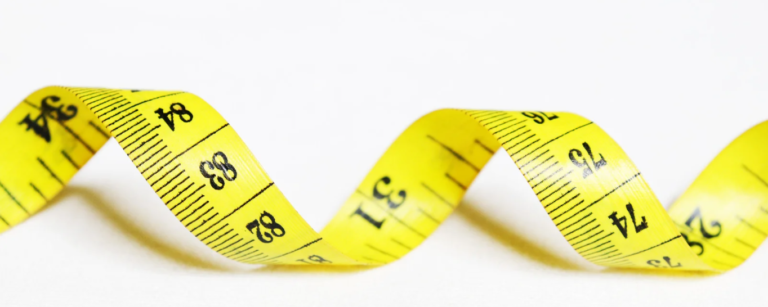Things That Are 100 Feet Long: 13 Common Things

Have you ever wondered what the length of 100 feet looks like?
In our daily lives, we often encounter objects and structures that are around this length without giving it much thought.
From iconic landmarks to everyday items, a myriad of things spans the impressive distance of 100 feet.
In this exploration, we embark on a journey through the domain of measurement, gaining insights into the significance of 100 Feet Long, examining its counterparts in different units, and pinpointing 13 commonplace entities that boast this noteworthy length.
What is 100 Feet Long?
A foot is a unit of length in the imperial system, equivalent to 12 inches.
Therefore, 100 feet translates to a staggering 1,200 inches. To put it in perspective, it’s roughly the height of a 10-story building or the length of about 33 average-sized cars parked bumper to bumper.
Different Units of Measurement
While the imperial system employs feet, other units of measurement may be more familiar to some.
In the metric system, 100 feet is approximately 30.48 meters.
This conversion showcases the cultural and geographical diversity in how we measure lengths.
These different units provide a global perspective on the magnitude of 100 feet.
Length Converter
Converted Lengths:
Meters: 0
Yards: 0
Inches: 0
Centimeters: 0
How to Measure 100 Feet Easily at Home?
Measuring 100 feet at home might seem like a daunting task, but with the right tools and techniques, it can be achieved.
One simple method involves using a standard measuring tape. Stretch it out to 100 feet, marking intervals as needed.
For those who prefer a more digital approach, various apps are available that utilize the camera on your smartphone to measure distances accurately.
Regardless of the method, measuring 100 feet at home can be a fun and educational activity.
Create a Table of 13 Common Things that are 100 Feet Long
| No. | Common Things | Length (Approx.) |
|---|---|---|
| 1 | Blue Whale | 100 feet (30.48 m) |
| 2 | Basketball Court | 94 feet (28.65 m) |
| 3 | Bowling Lane | 60 feet (18.29 m) |
| 4 | Tennis Court | 78 feet (23.77 m) |
| 5 | Football Field (End Zone) | 30 feet (9.14 m) |
| 6 | Train Carriage | 85 feet (25.91 m) |
| 7 | Standard Shipping Container | 40 feet (12.19 m) |
| 8 | Blue Whale (Heart) | 12 feet (3.66 m) |
| 9 | Giraffe | 16 feet (4.88 m) |
| 10 | Anaconda (Longest Recorded) | 25 feet (7.62 m) |
| 11 | African Elephant | 20 feet (6.1 m) |
| 12 | Girder (Typical in Building) | 100 feet (30.48 m) |
| 13 | Boeing 737 (Length) | 110 feet (33.53 m) |
Things That Are About 100 Feet Long: 13 Common Things
Blue Whale:
The largest mammal on Earth, a fully-grown blue whale, can reach lengths of up to 100 feet. These majestic creatures cruise the world’s oceans, captivating us with their sheer size.
Basketball Court:
While the standard dimensions of a basketball court fall just short of 100 feet, the length of the court including the end zones is approximately 94 feet.
This popular sports venue showcases a length comparable to our chosen measure.
Bowling Lane:
For avid bowlers, the distance from the foul line to the headpin on a bowling lane is about 60 feet. Though not exactly 100 feet, it’s interesting to note the length of this recreational space.
Tennis Court:
Tennis enthusiasts are familiar with the dimensions of a tennis court, which is 78 feet in length. Slightly shorter than our target, a tennis court still provides a considerable space for athletic activity.
Football Field (End Zone):
The end zone in American football extends 10 yards (30 feet) beyond each goal line, contributing to a total length of approximately 120 yards (360 feet).
However, the main playing field is about 100 feet wide, making it a considerable expanse.
Train Carriage:
A standard train carriage can measure up to 85 feet in length. These long vehicles are a common sight on railways, transporting passengers and goods across vast distances.
Standard Shipping Container:
Widely used for transporting goods across the globe, a standard shipping container has a length of 40 feet.
Doubling this length provides us with the familiar 100 feet benchmark.
Blue Whale (Heart):
In a fascinating twist, the heart of a blue whale, the largest heart in the animal kingdom, is about 12 feet in length.
While significantly smaller than the whale itself, it is still an impressive organ.
Giraffe:
The world’s tallest land animals, giraffes, can have necks reaching up to 16 feet. Imagine a line of giraffes, neck to tail, spanning the length of 100 feet.
Anaconda (Longest Recorded):
The longest recorded anaconda, a massive snake found in South America, measured about 25 feet.
While some anacondas can grow longer, the 25-foot mark is still a significant length to consider.
African Elephant:
One of the largest land mammals, African elephants can reach lengths of up to 20 feet, including their trunk and tusks.
These magnificent creatures roam the savannas of Africa, leaving an indelible mark on the natural world.
Girder (Typical in Building Construction):

In the realm of construction, a girder is a horizontal support beam often used in the construction of buildings and bridges.
A typical girder in such settings can indeed span 100 feet, showcasing the engineering feats that make our urban landscapes possible.
Boeing 737 (Length):

The length of a Boeing 737, a popular commercial jetliner, is approximately 110 feet. While slightly surpassing our chosen measure, the sheer size of this aircraft is a testament to human innovation in aviation.
How far is 100 feet when walking?
Walking is a fundamental human activity that often goes unnoticed, yet it plays a significant role in our daily lives.
While it may sound trivial, understanding the nuances of walking distance can provide insights into the mechanics of human movement and highlight the variability in individual walking speeds.
Average Walking Speed: To begin with, it’s essential to consider the average walking speed of an individual.
On average, people walk at a pace of around 3 miles per hour, or 4.5 feet per second. This average takes into account a wide range of walking speeds across various age groups and fitness levels.
Calculation: Given the average walking speed, we can calculate the time it takes to cover 100 feet.
If a person walks at the average pace of 4.5 feet per second, it would take approximately 22 seconds to traverse the distance of 100 feet.
This calculation provides a baseline understanding, but it’s crucial to note that individual walking speeds can vary significantly.
Walking Speed Calculator
Average Walking Speed:
Men: 0 feet per second
Women: 0 feet per second
Factors Influencing Walking Speed: Several factors can influence an individual’s walking speed, including age, fitness level, health conditions, and environmental factors.
Younger individuals or those in better physical condition may walk at a faster pace, while older individuals or those with mobility issues may have a slower walking speed.
Additionally, factors such as terrain, weather conditions, and footwear can impact how quickly someone can cover a certain distance on foot.
Real-world Variability: While the average walking speed provides a general guideline, it’s important to recognize the real-world variability in walking speeds.
Some people may walk briskly, covering 100 feet in less than 22 seconds, while others may stroll and take a bit longer.
Observing the diversity in walking speeds highlights the individual nature of this basic human activity.
FAQ’s
1. Why is 100 feet used as a measure for comparison?
The choice of 100 feet as a measure for comparison is arbitrary but serves as a convenient benchmark for understanding the scale of various objects and structures in our daily lives.
2. Are there other units of measurement that are commonly used for length?
Yes, apart from feet, the metric system uses meters, centimeters, and kilometers as units of length. The choice of unit often depends on regional preferences and the nature of the measurement.
3. How can I measure 100 feet at home without professional tools?
You can use a standard measuring tape or employ distance-measuring apps on smartphones. Marking intervals or using landmarks can help in estimating the distance accurately.
4. Are there other animals with lengths close to 100 feet?
No known animals reach exactly 100 feet in length. However, some large species, such as certain species of snakes and whales, come close to this impressive length.
Conclusion
In our exploration of things that are about 100 feet long, we’ve uncovered a diverse range of objects and structures, each contributing to the rich tapestry of our world.
From the depths of the ocean to the heights of the sky, the 100-foot mark serves as a common thread connecting the grandeur of nature and the ingenuity of human creation.
As we navigate our daily lives, let’s appreciate the significance of this measure, recognizing the vastness it represents and the marvels it encompasses.






